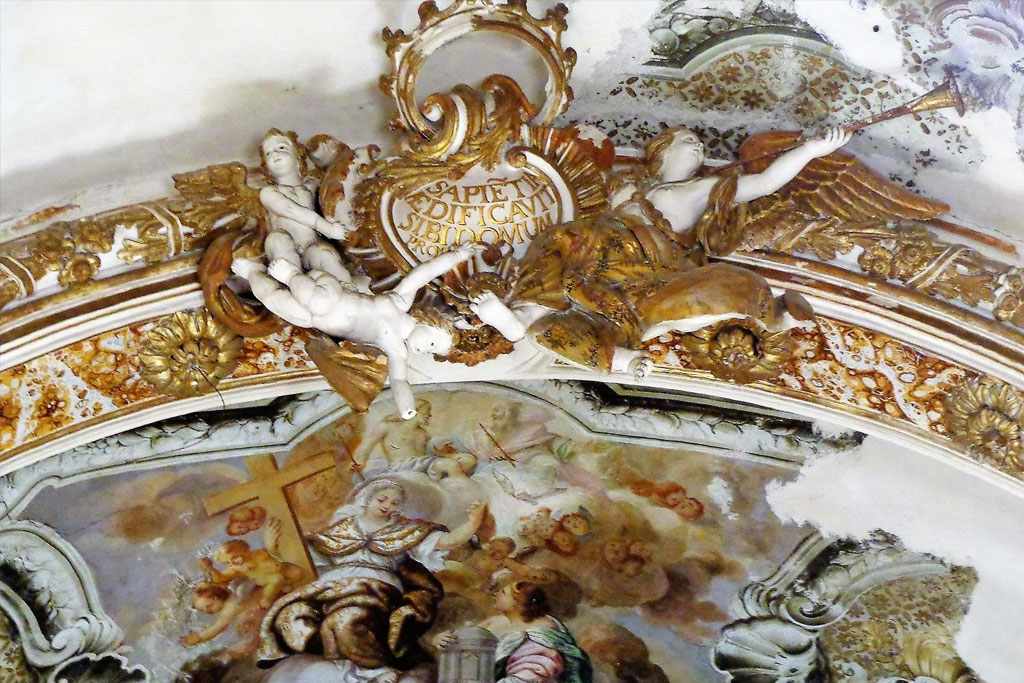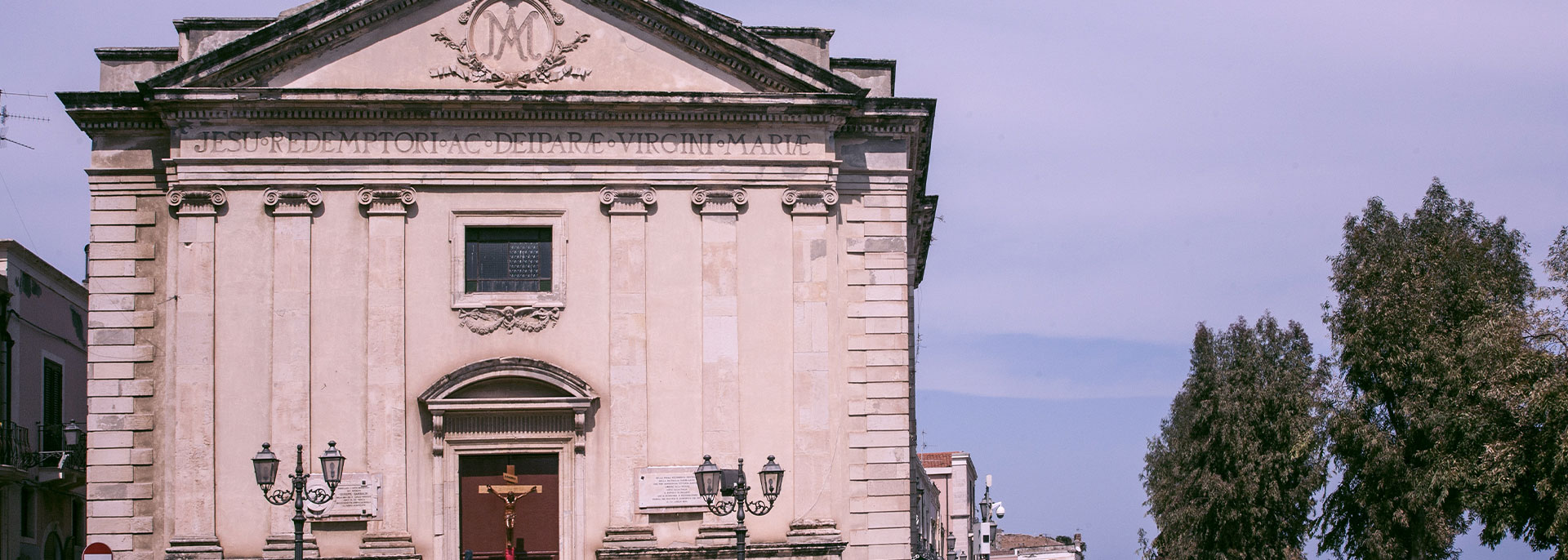According to Piaggia, the parish church of Santa Maria Maggiore was founded in 1621. It was originally dedicated to St Elmo, replacing the small church that had been demolished to build Fort St Elmo, but in 1623 it was dedicated to Jesus and Mary. In 1662, it became a parish church. The present title distinguishes the church from that of Jesus and Mary founded by St Francis of Paola and now dedicated to him.

Church of Santa Maria Maggiore
Extensive works were carried out by 1762, the year in which Scipio Manni signed the cycle of frescoes that probably completed the new Rococo interior design. Important work was also carried out in the 19th century when the current façade, which already existed in 1860, was built; the collegiate church and bell tower, which was demolished after the 1908 earthquake, date back to the same period. The building is therefore the result of discordant interventions, Rococo in the interior, neoclassical on the outside, on the original structure, the character of which is no longer discernible.
On the other hand, the relationship with the church of San Giacomo that faces it is clear: the two churches were meant to monumentally close off the most central stretch of the marina, originally marked by modest constructions on uniform lots. The church has a single nave with a semicircular apse. It is entered from a wide semicircular churchyard: the façade is single-order, barely animated by flattened Doric pilasters on a high smooth base, surmounted by a heavy triangular attic. The door is of simple design and unpretentious is the window, which was altered at the beginning of the century. Cantonals clad in ashlar cladding serrate the façade and bell tower, now reduced to its base after the demolition of the dado that housed the clock and the tall belfry above.
The design of the façade is taken up, in simplified forms, by the colonnade that develops on the right side with a central body between rusticated cantonments (enclosing the entrance door) and side bodies also defined by rusticated cantonments. Three orders of simple openings open into the collegiate church, the crowning of which has a wide horizontal cornice connected to the attic of the church. On either side of the door, two epigraphs recall the well-known episode of Garibaldi's resting on the threshold of the church. The interior is characterised by an important stucco decoration with angels and floral motifs, typically Rococo, framing the niche altars, separated by pilasters, and the frescoes by Manni in the vaults.
Manni's pictorial cycle, undoubtedly executed with the help of his workshop, depicts evangelical and biblical episodes: in the centre of the vault is the largest square (supported by a group of angels) depicting the expulsion of the mercenaries from the Temple, while in the apse basin is the presentation of Jesus in the Temple: smaller squares depict biblical characters (blind Abraham, David). Particularly successful is the complex floral decoration framing the frescoed panels, a typical example of the advanced Rococo taste. A group of stucco angels holds a coat of arms adorning the triumphal arch. Putti and festoons adorn the windows in the nave above the altars. All the altars were decorated with modest polychrome marble in the 19th century, while the paintings depicting the Crucifix, the Trinity, the Immaculate with Saints and the Infant Jesus with Saints date back to the 18th century.
The neoclassical high altar, of 19th-century workmanship, is adorned by the 18th-century painting of the Madonna of the Snow flanked by the contemporary paintings of the Nativity and the Adoration of the Magi. The choir and the wooden pulpit surmounted by a polychrome angel can also be attributed to the 19th-century interventions in a sober neoclassical style. The small altar of Saint Espedito with a polychrome statue of the saint and the funerary monuments Greco Picciolo of 1869 and Calcagno Cumbo of 1880 date back to the same period. The baptismal font consists of a kiss-shaped basin resting on a leafy column, heterogeneous elements datable to the Baroque and Romantic periods respectively.
Devotional evidence is provided by the statue of Our Lady of Sorrows, placed in a showcase, and the statuette of the baby Jesus. Only two epigraphs with a coat of arms and an anepigraphic slab with a coat of arms remain in the recently redone floor. The numerous now-lost funerary inscriptions are known thanks to Piaggia. In the sacristy, only a beautiful stone niche fountain is preserved, surmounted by a cartouche with the date 1742.
Chillemi F. Milazzo città d'arte. Disegno urbano e patrimonio architettonico, Messina 1999.
INDIRIZZO
Church of Santa Maria Maggiore Via Marina Garibaldi, Milazzo (ME)







